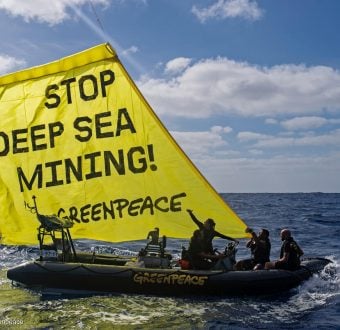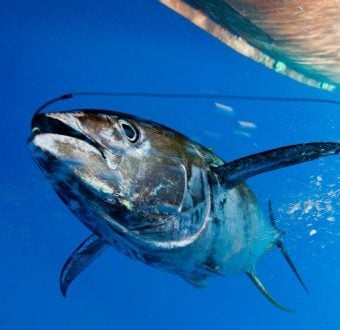Whaling Is Needless Cruelty
Whales are more easily harmed by hunting than any other animal because many whale species live eighty or more years and reproduce late in their life cycle. The blue whale once had a healthy population of 300,000 individuals. Today, less than 3 percent of that number remains.
Whales play an important role in ocean ecosystems by bringing stability to the food chain. Removing the top of the food chain drastically disrupts population counts of many other animals, which can throw the ecosystem off balance, resulting in chaos for men and women whose job involves commercial fishing.
Whales are very intelligent, and most whaling practices are painful. Hunters use explosive harpoons to injure the whale until it bleeds out minutes or hours later. Overall, it becomes abundantly clear whaling is an inhumane practice that should be stopped.
IWC Puts a Moratorium on Whaling
1975 marks Greenpeace’s first whaling voyage, and it was seven years of effort before public outcry was heard. In 1982, the International Whaling Commission issued a moratorium on commercial whaling that came into effect in 1986. Years later, in 1994, the Antarctic Whale Sanctuary was approved by the IWC. However, the fight was is from over. Norway, the USSR, Japan, and Peru all protested this development.
Supporters use both direct and indirect tactics to stop whaling. Greenpeace activists tail whalers on boats and motorized rafts, sometimes putting their own bodies between harpoon and whale while capturing video to show the public. The caring public then pressures local governments through petition, marching, or even sending hundreds of thousands of origami whales to Japan in protest.
Greenpeace Supporters Rally Against Scientific Whaling
Iceland, among other countries, continued to hunt whales through a loophole: “scientific whaling.” Greenpeace supporters would have to be similarly creative if they hoped to stop scientific whaling. Luckily, tourism has become one of the major sources of income to Iceland in recent years and whale watching attracts around 72,000 tourists yearly, bringing in more than $14.6 million a year to the Icelandic economy.
People power mobilized into a global movement where activists took a pledge to consider vacationing in Iceland if whaling stopped. Today, more than 50,000 people have taken the pledge representing $58.3 million in tourism value, versus $4 million from commercial whaling at its peak. As a result, Iceland sharply decreased its whaling practices, realizing that whales are worth more alive than dead.
Though Japan, Norway, and Iceland continue to practice whaling through loopholes, ultimately whaling kill counts have decreased over time. The ongoing fight against whaling is an excellent example of the vigilance required for people power to triumph; the public has accomplished much in stopping needless whale deaths, but there is always more work to be done.


